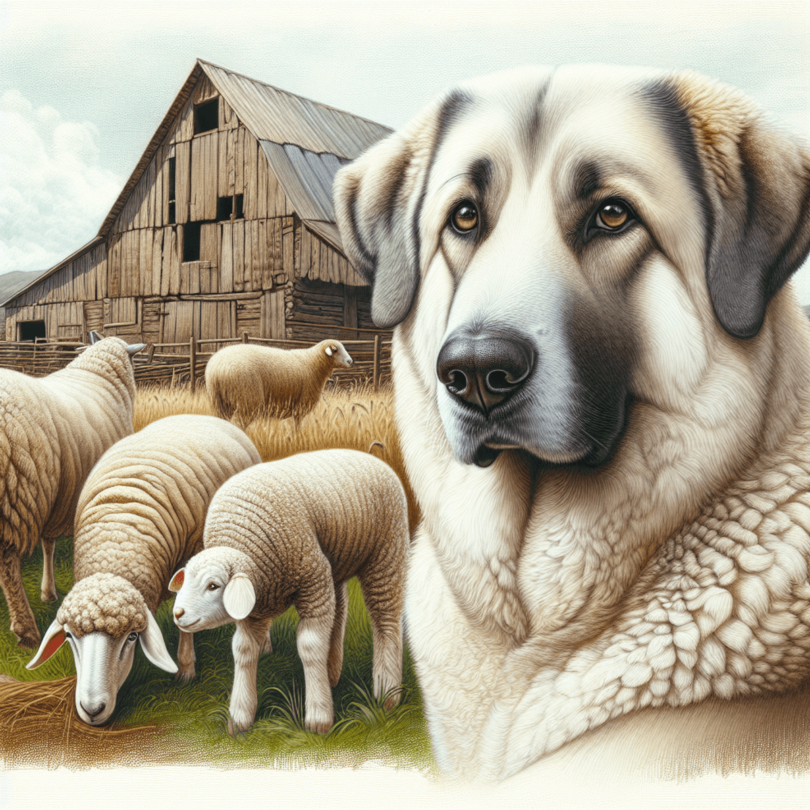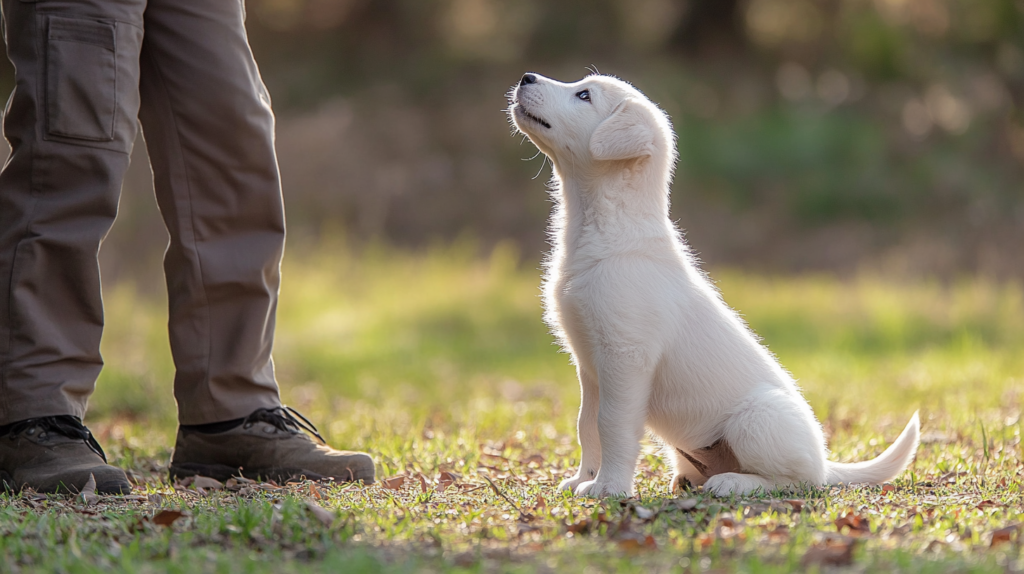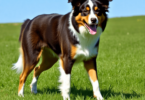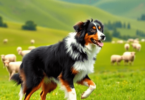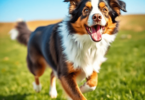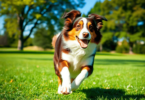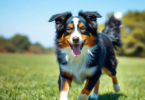Top Akbash Training Tips
Meet the Akbash, a magnificent livestock guardian dog with roots tracing back to Turkey. Known for their striking appearance and impressive guarding instincts, these dogs are both loyal companions and vigilant protectors of livestock.
Training your Akbash is not just a luxury; it’s a necessity. An untrained Akbash may become overly protective or develop unwanted behaviors, jeopardizing the safety of your animals and themselves. Effective training methods ensure that your Akbash grows into a well-mannered guardian, capable of performing its duties with confidence and grace.
This article delves into the essentials of Akbash dog training, providing you with:
- Insight into the breed’s unique characteristics
- The importance of early training for livestock guardian dogs
- Step-by-step guidance on effective training techniques
By the end, you’ll be equipped with the tools needed to shape your Akbash into an exceptional guardian, ready to take on the responsibilities that come with the job.

Understanding the Akbash Learning Style
The Akbash breed has a long history that goes back to ancient Turkey, where they were mainly bred to protect livestock. This noble background influences their distinct temperament and personality traits today.
Key Characteristics
- Independent Thinkers: Akbash dogs are known for their strong-willed nature. They have a natural instinct to protect and guard, which makes them less likely to obey commands without understanding the reason behind them.
- Gentle Giants: Despite their large size, Akbash dogs often have a calm demeanor. This gentle nature is important for their interactions with both livestock and humans.
- Alertness: Their sharp senses make them watchful guardians, always aware of what’s happening around them.
Understanding these breed characteristics is crucial in developing effective training strategies.
Importance of Breed-Specific Behaviors
Training an Akbash requires adapting techniques that resonate with their unique learning style. Recognizing their independent temperament allows trainers to:
- Implement patient and consistent training methods
- Utilize positive reinforcement to motivate and engage
- Acknowledge the need for mental stimulation alongside physical exercise
This understanding forms the foundation for successful Akbash obedience training and helps build a cooperative bond between you and your furry guardian. With the right approach, you can turn your Akbash into a well-behaved protector ready to fulfill its duties.
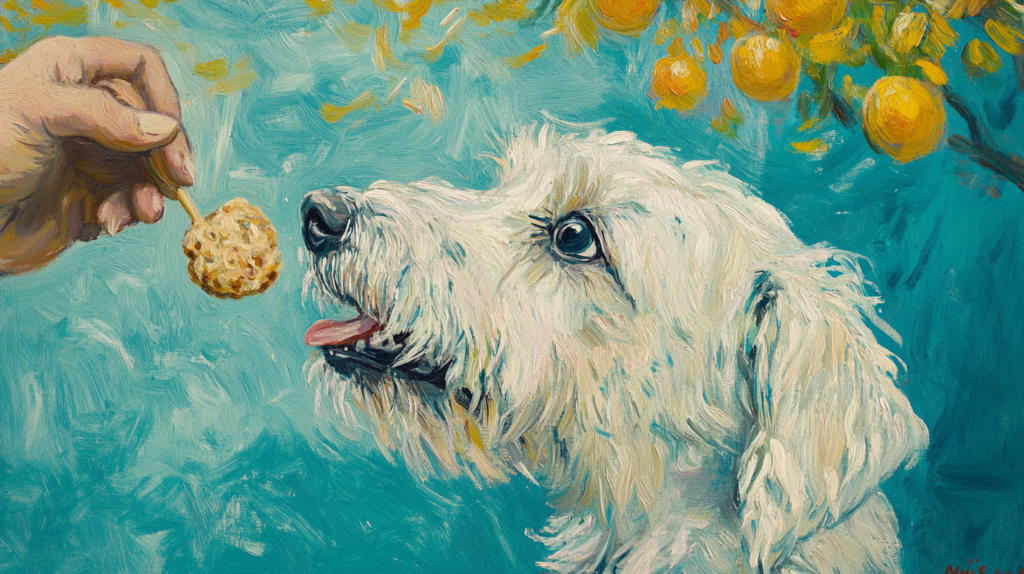
Starting Training Early
Training an Akbash should kick off as soon as possible—ideally at 8 weeks old. This early start lays the groundwork for good habits and prevents unwanted behaviors from taking root. Puppies are like little sponges, soaking up everything around them. The earlier they begin learning, the easier it is to shape their behavior.
Importance of Early Training
- Establishing Good Habits: Early training helps instill essential commands and routines. This is particularly crucial for a livestock guardian dog, where good behavior can mean the difference between safety and chaos.
- Preventing Bad Behaviors: An untrained Akbash can develop problematic behaviors that may be difficult to correct later. Starting young minimizes these risks.
Puppy Supervision and Bonding Techniques
Creating a safe and engaging environment is vital during these formative weeks. Here are some puppy supervision and bonding techniques:
- Structured Playtime: Engage in daily play sessions to strengthen your bond. Use toys that encourage interaction while teaching your pup about appropriate behaviors.
- Handling Exercises: Regularly handle your puppy’s ears, paws, and mouth. This familiarizes them with being touched, which is especially important for their future roles as guardians.
- Consistent Routine: Puppies thrive on routine. Consistency in feeding, potty breaks, and training sessions builds trust.
The Role of Socialization
Socialization plays a pivotal role in puppy development. It’s not just about meeting new people and dogs; it’s about exposure to various sights, sounds, and environments.
Benefits of Early Socialization with Vaccinated Handlers
Introducing your Akbash to vaccinated handlers early ensures they learn positive interactions with people while minimizing health risks. Here are some benefits:
- Confidence Building: Positive social experiences help build confidence in unfamiliar situations.
- Reducing Fearfulness: Early exposure reduces anxiety around new experiences or environments later in life.
Techniques for Effective Puppy Socialization
Implementing effective socialization strategies will make a world of difference:
- Controlled Introductions: Start by introducing your puppy to calm older dogs or gentle animals before moving on to more chaotic environments.
- Group Settings: Join puppy socialization classes within the first few months. These classes offer structured playtime with other puppies under professional supervision.
- Daily Exposure: Incorporate daily outings where your Akbash can encounter different people, noises, and settings.
Training Your Akbash through early socialization ensures they grow into well-adjusted adults ready to take on the world—protectively and confidently! With patience and consistency, you’re setting the stage for a harmonious relationship with your furry guardian.

Creating a Structured Training Environment
Establishing a secure pen for training is the first step in ensuring your Akbash enjoys a safe and effective learning experience. This designated area should be:
- Fenced properly: Use sturdy materials to prevent any escape attempts.
- Free of distractions: Limit noise and movement from other animals or people to keep your puppy focused.
Next comes the transition phase. Gradually moving from a secure pen to larger areas near livestock provides numerous benefits:
- Controlled expansion: Start with small, supervised play sessions in a larger field, allowing the Akbash to explore without overwhelming them.
- Positive associations: Introduce livestock gradually. Familiarizing your puppy with these animals will help them learn appropriate behavior as they grow.
During this time, effective supervision is key. Monitor interactions closely to ensure safety and reinforce positive behaviors.
This structured approach not only aids in training but also builds confidence in your Akbash as they become accustomed to their role as a guardian dog. Setting the right environment paves the way for effective learning and successful integration into farm life.
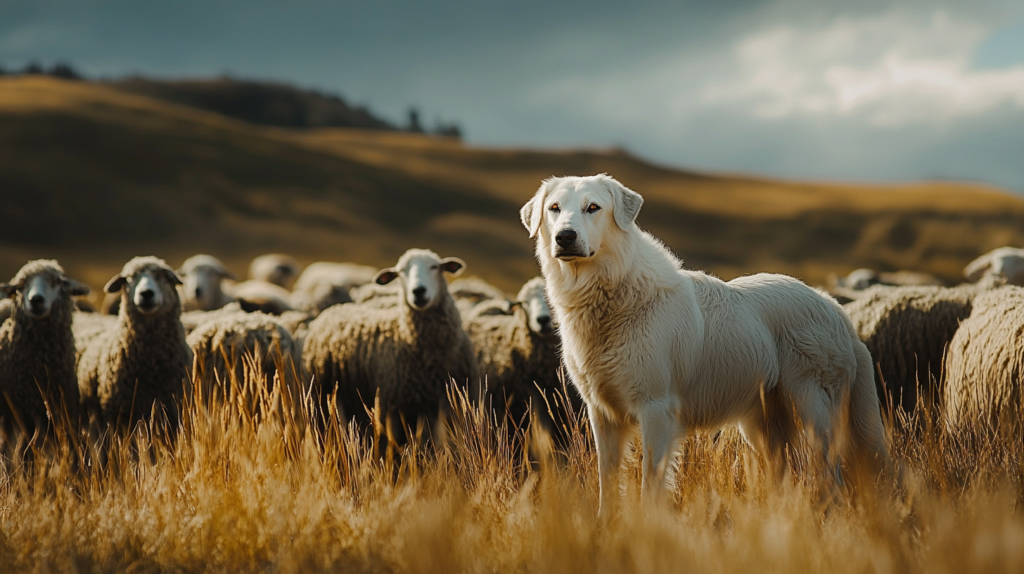
Daily Handling and Behavior Observation
Training an Akbash goes beyond the basics of commands. Daily handling plays a crucial role in building trust and ensuring effective behavior correction. Regularly interacting with your puppy fosters a deeper bond, setting the stage for a well-adjusted guardian dog.
Key Benefits of Daily Handling
- Behavioral Observation: Frequent handling allows you to monitor your puppy’s behavior closely. Look for signs of anxiety, excitement, or aggression, which can guide your training approach.
- Trust Building: Regular touch and interaction help your Akbash feel secure. This trust is vital, especially when introducing corrections or new experiences.
- Desensitization: Handling different areas of your dog’s body (ears, paws, teeth) prepares them for routine care like grooming and veterinary visits.
Techniques for Effective Handling
- Gentle Touch: Use a calm and gentle approach to handling. Puppies respond best to soft pressure rather than harsh treatment.
- Routine Inspections: Incorporate brief inspections into daily playtime. Check their ears, mouth, and paws while making it a fun activity.
- Positive Reinforcement: Reward good behavior during handling with treats or praise, reinforcing the idea that being handled is a positive experience.
Creating a structured environment where regular interaction takes place will ensure your Akbash grows up to be a confident and well-behaved guardian dog.

Correction Techniques for Misbehavior
Training an Akbash requires a thoughtful approach to correction techniques for dogs. Using the right mix of verbal and physical methods can lead to effective training outcomes.
Different Forms of Correction
- Verbal Corrections: A firm “no” or “ah-ah” can interrupt unwanted behavior without instilling fear. Consistency in tone is key; keep it assertive but not harsh.
- Physical Corrections: These should be used sparingly, like a gentle tug on the leash or a light tap to redirect focus. The goal is not punishment but guidance.
Balancing Positive Reinforcement with Corrections
Incorporating positive reinforcement creates a balanced training environment. When your Akbash follows commands or exhibits desirable behavior, reward them with treats, praise, or playtime. This encourages repeat performances and builds a strong bond.
- Timing Matters: Immediate rewards for good behavior make learning clear and rewarding.
- Avoid Over-Correction: Too much focus on corrections can lead to anxiety or resistance. Instead, blend corrections with positive experiences.
Using these techniques helps shape your Akbash into a well-adjusted livestock guardian while fostering trust and understanding between you both.
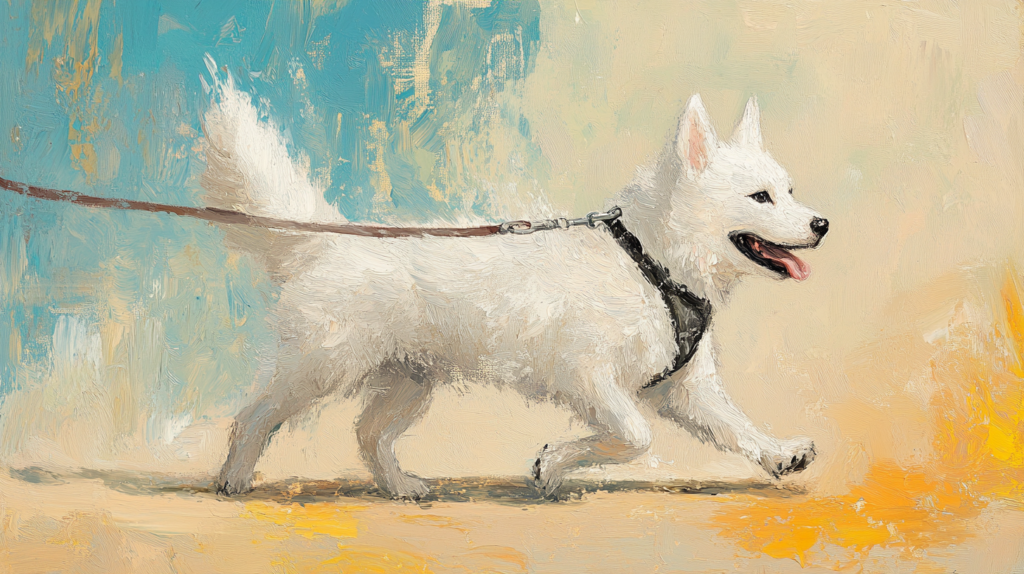
Supervised Interaction with Livestock
Creating a safe environment for your Akbash to interact with young livestock is crucial for both the dog’s development and the safety of the animals. Here are some essential guidelines to follow:
- Age Matters: Limit unsupervised interactions until your Akbash reaches 1-2 years old. At this age, they are more likely to exhibit controlled behavior around livestock.
- Observation is Key: Always supervise interactions closely. This helps in monitoring the puppy’s behavior, ensuring that play remains gentle and appropriate.
- Gradual Exposure: Introduce your Akbash to livestock responsibilities slowly. Start with short sessions of supervised play, gradually increasing duration as confidence and skills develop.
- Positive Reinforcement: Reward calm behavior during interactions. Treats or praise can encourage your Akbash to associate young livestock with positive experiences.
- Recognizing Boundaries: Teach your dog to respect personal spaces of the livestock. This understanding fosters trust between your Akbash and the animals they will eventually protect.
Incorporating these strategies not only enhances the safety of young livestock but also builds a strong foundation for your Akbash’s role as a guardian. With patience and consistency, you’ll help them become reliable protectors of their future flock.
Leadership and Consistency in Training
Establishing yourself as a leader in your Akbash’s life is crucial for effective training. Dogs thrive under clear guidance and structure, and when they recognize you as the leader, they are more likely to respond positively to commands.
Key strategies include:
- Confidence is Key: Approach training with confidence. Your dog can sense hesitation, which may lead to confusion about who is in charge.
- Consistent Commands: Use the same words and signals for each command. This consistency helps your dog understand expectations without ambiguity.
- Positive Reinforcement: Celebrate good behavior with treats, praise, or playtime. Reinforcing desired behaviors creates a positive association and encourages repetition.
Daily interactions present numerous opportunities for reinforcing good behavior:
- Routine Activities: Incorporate training into everyday tasks, such as feeding or walking. These moments serve as perfect chances to practice commands.
- Social Interactions: Engage your Akbash in social settings where they can learn appropriate behaviors from other dogs and people.
- Calm Assertiveness: Maintain a calm demeanor during training sessions. This teaches your dog to remain focused and relaxed, enhancing their learning experience.
Training your Akbash requires patience and persistence. By establishing leadership and consistently reinforcing positive behaviors, you lay the foundation for a well-adjusted guardian dog ready to thrive in its role.
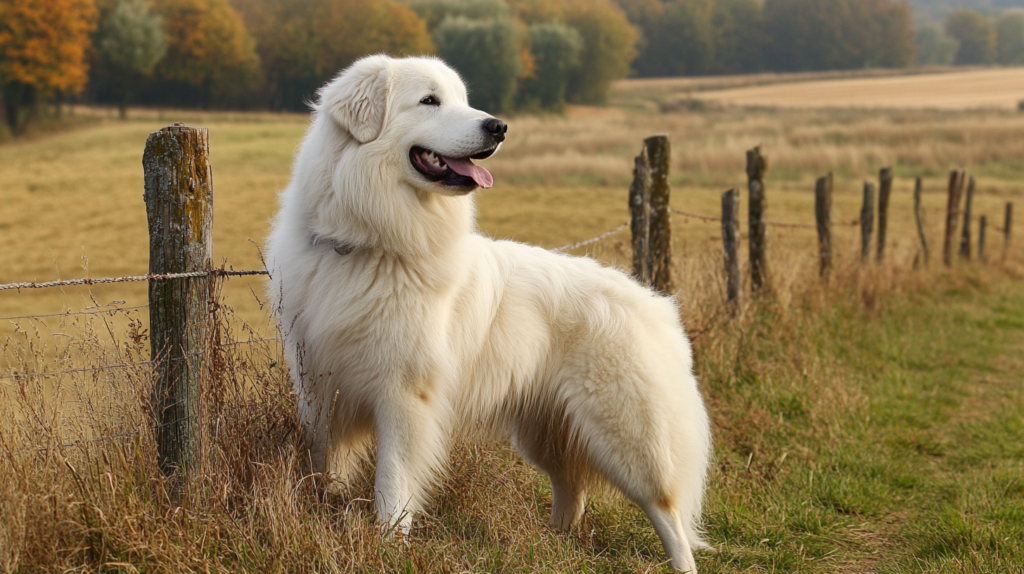
Understanding Canine Behavior
Training an Akbash effectively hinges on understanding essential aspects of canine behavior. This breed, known for its guarding instincts, has unique traits and needs that differ from typical companion dogs.
Key Points to Consider:
- Working vs Companion Dogs: Unlike many breeds that are bred primarily for companionship, Akbash dogs are working dogs. They excel in environments where they can fulfill their instinctual roles, like protecting livestock. Recognizing this helps tailor training methods that resonate with their nature.
- Behavioral Cues: Familiarizing yourself with common canine signals—such as tail position, ear posture, and body language—can enhance communication. For example, a wagging tail does not always indicate happiness; it may also signal excitement or anxiety.
- Social Structure: Akbash dogs thrive on a clear social structure. Setting boundaries early on establishes you as the leader. Consistent reinforcement of rules helps your dog understand expectations during training sessions.
- Mental Stimulation: Engaging your Akbash in activities that challenge their intellect is crucial. Puzzle toys, scent games, and obedience tasks keep their minds sharp and reduce unwanted behaviors rooted in boredom.
By integrating these behavioral insights into your training strategy, you foster a harmonious relationship with your Akbash while preparing them for their vital role as a livestock guardian dog.
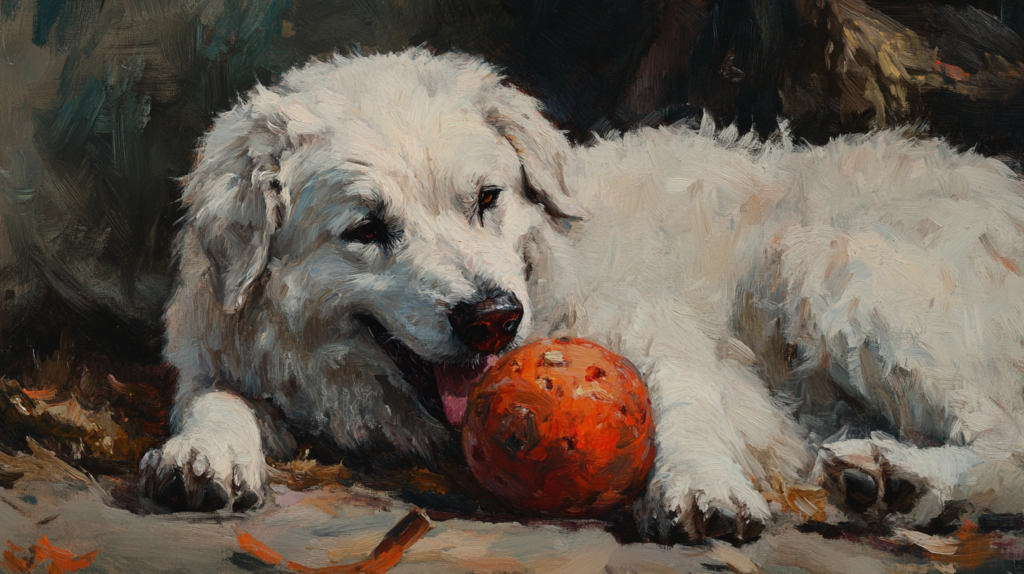
Conclusion
Training your Akbash can lead to successful outcomes that benefit both you and your canine companion. Consistent application of key strategies is essential for shaping desired behaviors. Consider these vital points:
- Start Early: Initiate training around 8 weeks to form solid foundations.
- Socialization Matters: Engage with other vaccinated animals and handlers to develop confidence.
- Structure is Key: Create a safe training environment, allowing gradual exposure to livestock.
- Teach Commands: Focus on essential obedience commands, reinforcing them regularly.
Building a bond with your trained Akbash is a journey of mutual respect, understanding, and patience. Embrace this process, knowing that each interaction is an opportunity for growth and connection. Your dedication will pave the way for a well-adjusted guardian who thrives in their role.
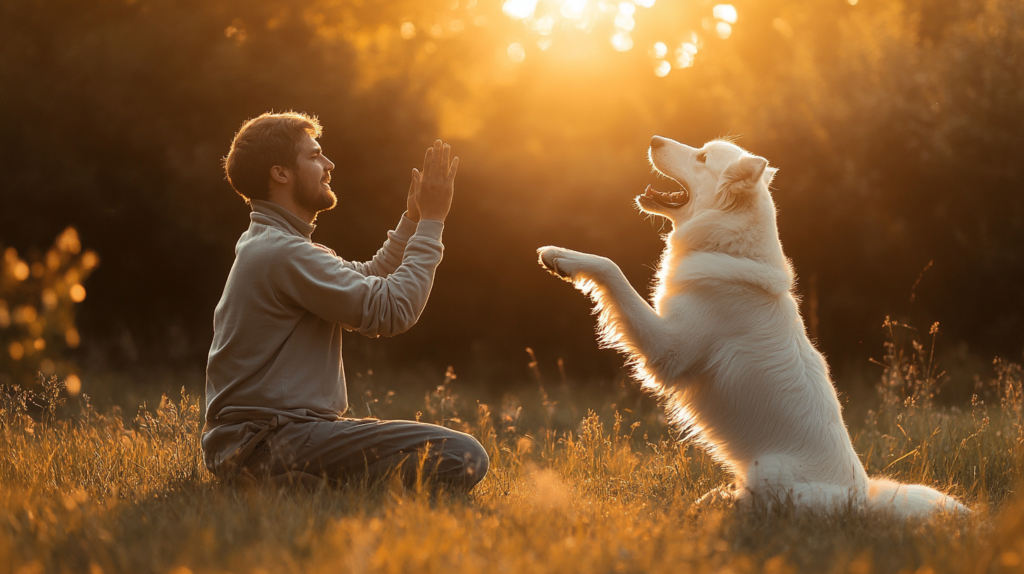
FAQs (Frequently Asked Questions)
What is the importance of training an Akbash?
Training is crucial for an Akbash as it helps to establish proper behavior and communication between the dog and its owner. It ensures that the dog can effectively perform its role as a livestock guardian, understand commands, and socialize appropriately with other animals and people.
When should I start training my Akbash puppy?
It is recommended to start training your Akbash puppy as early as 8 weeks old. Early socialization and training are vital for developing a well-adjusted adult dog. Techniques such as supervised interactions and bonding practices can significantly enhance the training process.
What basic obedience commands should I teach my Akbash?
Essential obedience commands for your Akbash include ‘come,’ ‘sit,’ ‘down,’ and others. Teaching these commands effectively involves using consistent techniques, positive reinforcement, and regular practice to ensure your dog understands and responds reliably.
How can I create a structured training environment for my Akbash?
To create a structured training environment, set up a secure pen for initial training sessions. Gradually transition to larger areas near livestock as your dog becomes more comfortable and confident. A safe environment helps facilitate effective learning.
What are some correction techniques for misbehavior in my Akbash?
Correction techniques can vary from verbal cues to physical corrections. It’s important to balance positive reinforcement with corrections, ensuring that you guide your dog towards desired behaviors while maintaining trust and respect in your relationship.
Why is early socialization important for my Akbash?
Early socialization is essential for puppies as it helps them develop confidence and learn appropriate behaviors when interacting with other animals and humans. By exposing your Akbash to various environments, people, and vaccinated handlers, you lay the groundwork for a well-socialized adult dog.
